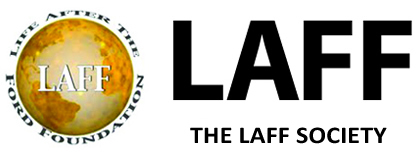NEWSLETTER
|
The New Deal Artists
Roger Kennedy, who managed the Foundation’s investments during the Bundy era and later headed the Office of the Arts, has a new book out: When Art Worked: The New Deal, Art, and Democracy, an illustrated text describing how Franklin Roosevelt’s New Deal subsidized the work of artists, photographers, post office muralists, travel guide writers, and other interpreters of American culture to regenerate pride in our democracy. The book is illustrated with more than 400 images—from the faces of dust bowl farmers forced to leave their lands to jobless youth building woodland hiking trails.
In an appreciation written by David Boilier of the On the Commons organization, “Kennedy calls his subject ‘actionable’ art. Whether it was murals in post offices, writers hired to write region travel guides, or the Civilian Conservation Corps building public amenities in the national parks, the net effect was to engage large numbers of citizens to work on behalf of large numbers of citizens.” The art created helped express the “peoplehood of America and the constructive role the government could play to alleviate misery. Art became a vital tool in rallying pride, illuminating vital necessities, arousing awareness of the suffering of people, and drawing attention to the need for natural resource preservation.”
Ken Burns, who created the PBS series on the Civil War, says that Kennedy has produced “a remarkably clear look at the art that came out of one of our darkest hours, an art that not only expressed the struggle but now stands for much of how we understand it.”
Kennedy is former director of the National Park Service in Washington. He currently is director emeritus of the National Museum of American History. Among his other books are Burr, Hamilton and Jefferson: A Study in Character, published in 1999, and Historic Homes in Minnesota, published in 2006. He lives in Rockville, Md.
|

